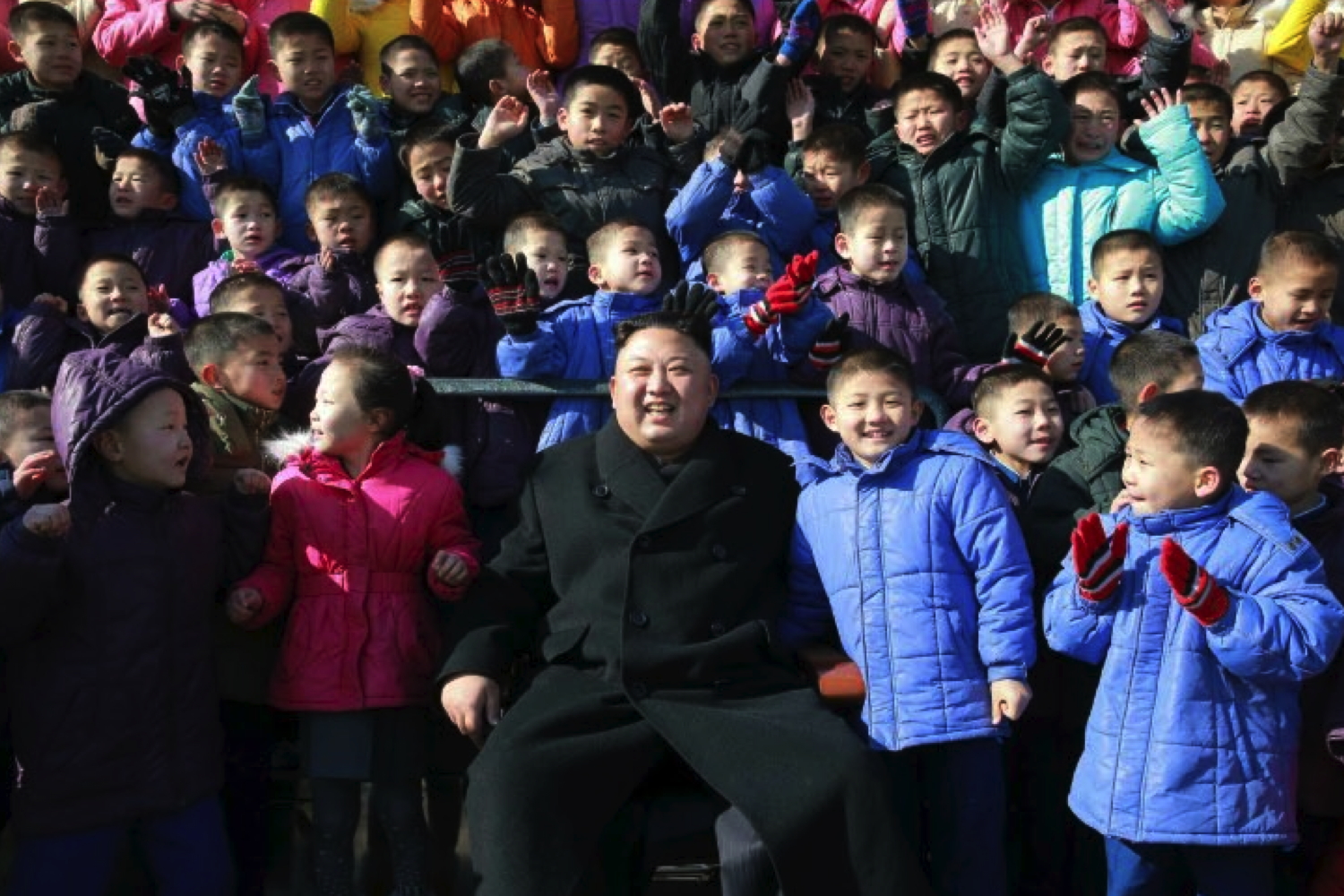Kim Jong Un Visits School for Orphans

Kim Jong Un smiles whilst posing for a commemorative photograph with students and teaching staff of the Pyongyang Orphans’ School in a photo which appeared top center on the front page of the February 2, 2017 edition of the WPK daily organ Rodong Sinmun (Photo: Rodong Sinmun).
KJU’s last observed appearance was his inspection and command of a tactical drill
DPRK state media reported on February 2 (Thursday) that Kim Jong Un (Kim Cho’ng-u’n) visited the Pyongyang Orphans’ Primary School. Also in attendance were Workers’ Party of Korea [WPK] Vice Chairman and State Affairs Commission Vice Chairman Choe Ryong Hae (Ch’oe Ryong-hae), Pyongyang City WPK Committee Kim Su Gil (Kim Su-kil), WPK Organization Guidance Department Deputy Director Jo Yong Won (Cho Yo’ng-wo’n) and State Affairs Commission Design Department Director Ma Won Chun (Ma Wo’n-ch’un).

Commemorative photograph of Kim Jong Un with students and teachers of the Pyongyang Orphans’ School which appeared bottom-center on the front page of the February 2, 2017 edition of WPK daily organ Rodong Sinmun (Photo: Rodong Sinmun/KCNA/Korean Press Media).
Jong Un was “pleased that the school building was built in a modern and fashionable style” and remarked that “all classrooms were put on a multi-functional and IT basis to suit the features of primary education and equipped with varieties of teaching facilities.” He noted that “the school has [a] well-furnished room for the education in Kim Jong Il’s (Kim Cho’ng-il) patriotism, room for the members of the Chldren’s Union, nature study room, music and dance room, etc., and all its spaces are devoted to acquiring knowledge and common sense as the corridor is decorated with diverse paintings and other things which attract children’s interest and ensure visual, scientific and vivid effect.”
He dropped in on a language class and learned “in detail with fatherly care” about “how pupils are taught and how teaching aids are used, their cognitive ability and the quality of their textbooks and notebooks.” He noted that the living quarters were “built in such [a] way” that it “not only suits children’s minds but enables them to live without any inconvenience” and was “satisfied with everything such as bedrooms and dining room, barber’s and clinic.”

Photo spread of Kim Jong Un’s visit to the Pyongyang Orphans’ School which appeared on the top of page 2 of the February 2, 2017 edition of the WPK daily newspaper Rodong Sinmun (Photos: Rodong Sinmun/KCNA/Korean Press Media).
Kim Jong Un said that “the quality of the country’s overall education including higher education depends on the quality or primary and secondary education and a shortcut to building a talented nation lies in thoroughly implementing the Party’s policy of prioritizing primary and secondary education.” He issued “important instruction that would serve as guidelines for managing and operating the school.” Jong Un “urgently asked the officials and teaching staff of the school to take good care of its pupils, reflecting his wish, so that they may grow up uprightly, stoutly and cheerfully without the slightest sadness and worry, as orphans have our Party only to trust and depend on.”

Commemorative photograph of Kim Jong Un with senior DPRK officials and construction personnel involved in the construction of the school which appeared on the bottom of page 2 of the February 2, 2017 edition of the WPK daily newspaper Rodong Sinmun (Photo: Rodong Sinmun).
He wrapped up his visit to the school with a commemorative photo-op with the students and faculty of the school, along with the personnel involved in the school’s construction.